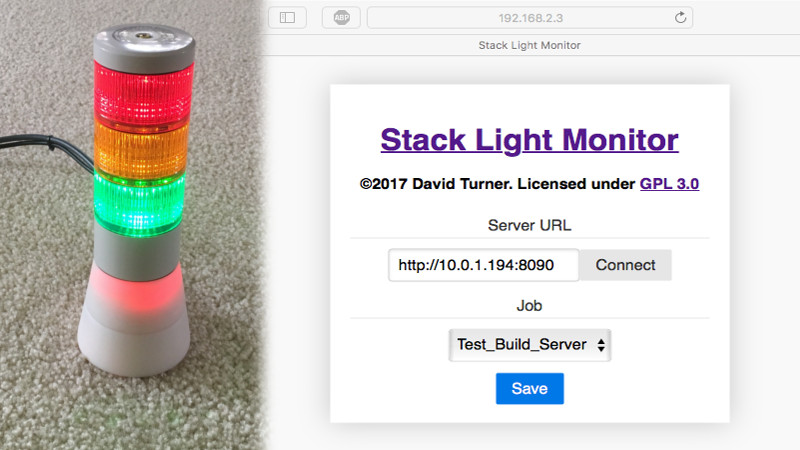When working on software development in a team environment, it’s important to know the status of your build at all times. Jenkins can display build automation info on a screen but where’s the fun in that? A popular office project is to build some kind of visual display of a project’s status, and [dkt01] has done just that with this stack light build monitor.
In this day and age of online shopping, random bits of industrial hardware are just an eBay away, so it’s easy to find some cool lamps or indicators for any project. [dkt01] sourced a standard 24V stack light off the shelf. With its green, red, and yellow indicators, its perfect for showing the current status of their build server.
The project uses an Arduino Pro Micro combined with an ENC28J60 Ethernet adapter. We used to see that chip all the time but in 2017 it’s somewhat of a classic setup with the great unwashed masses largely migrating to the ESP8266. However, for the purposes of this project, it was perfect for connecting to the wired office network (after all, you want to know the status of your build and not of your WiFi). [dkt01] even managed to get a web configuration to work despite the relatively meager resources of the ATmega32u4.
The build is cleanly executed, with the microcontroller and Ethernet hardware tucked into a 3D printed base for the stack light’s enclosure. It’s far more likely to become a permanent office fixture if it’s a tidy build without wires hanging out everywhere so a custom PCB ties everything together neatly. In another nice touch, the stack lights flash on initialization to indicate if the DHCP lease was successful, which makes troubleshooting easier. There’s an overview of all different light combinations and meanings in the video after the break.
Overall it’s a solid build with some off-the-shelf components that serves a genuine purpose. For a similar project built on a smaller scale, check out the Indictron. For something bigger, show us how you’ve learned to output your server status on the city’s traffic lights. Ask first, though.
















A web server with lights this has never been covered on HAD before imagine if they used an RPi instead of an Arduino.
Imagine if people learned to use punctuation so they didn’t look like uneducated crybabies.
Please find another community to be sarcastic and unhelpful in. Many of us like and appreciate Hackaday for sharing posts like this, allowing others to learn more about our projects and furthering a fun, collaborative, intelligent and safe community. Your attitude is not welcome here.
Too many codes. Are/did things go well? Are/did they not go well? Are you just killing time, waiting to start the next cycle?
The light itself and its power supply are around $40 on amazon, add in the arduino and other bits and this is around a $75 project. Not expensive, but IMO on the high side for a blinky build light. (I was considering doing this project myself)
Yeah, some of the components can be pricy, but if you search around a bit and get lucky the light can be pretty cheap. When machine shops liquidate, various lights can go for <$20 on eBay and clone components are less expensive than the name brands.
This was more of a fun learning project, so I decided it was worth the cost.
Frosted acrylic rod sections (foil / light barrier between sections) and a few LEDs at strategic places is probably cheaper. An excuse to break out the soldering iron too.
Though it won’t look as industrial without a lot of time spent on it at which point it’s probably cheaper to buy the surplus one you mentioned.
Very nice project, spelling the magical words “ONPOW Industrial Warning” retrieves alternatives for around USD $10 in Ali! ( http://s.click.aliexpress.com/e/N3V7mAM )
Nice find!
Nice finish embedding the electronics in the base of the light stack. If it were me, instead of getting a 24v PSU I’d have replaced the light bulbs with bright LEDs and powered the whole thing off 5v.
Very cool project! I know a few software engineers who would love something like this for their builds.